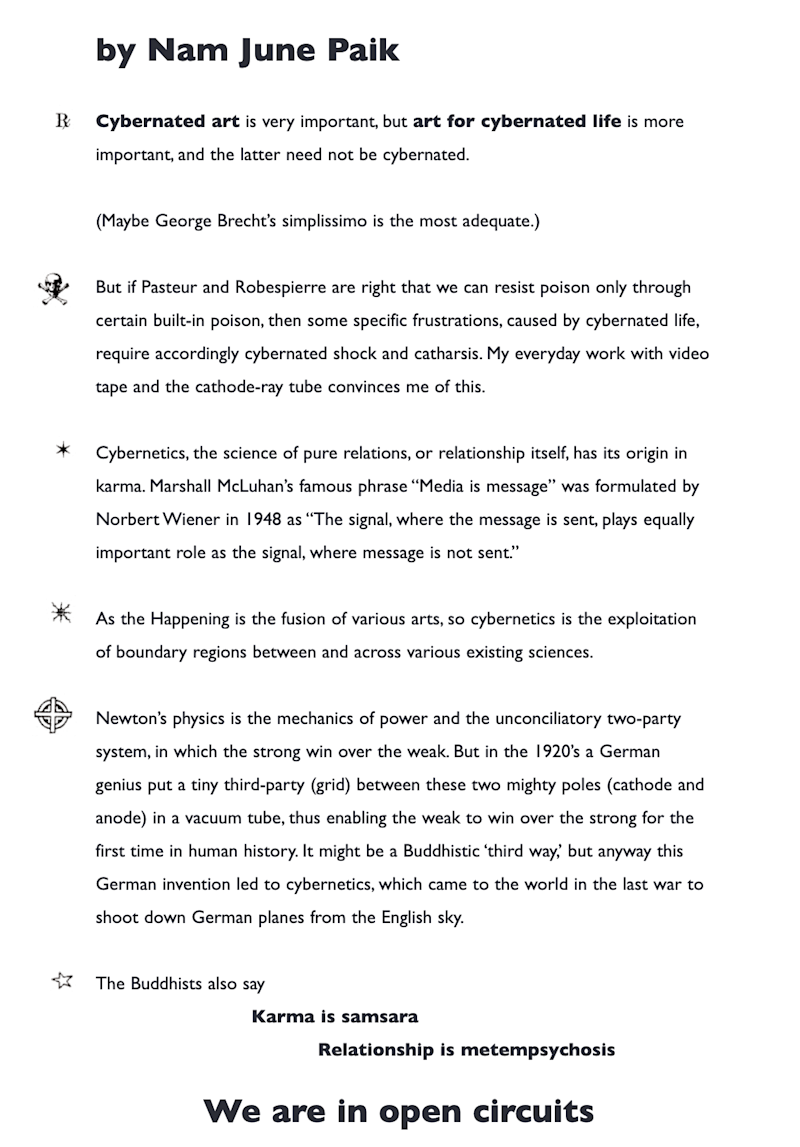Essay
On Complexity
9/7/2021
Casey Tang
This piece came out of one of our “Are.na Walkthroughs” in which we ask people to take us through a particular channel, the blocks and ideas held within, and the ways those ideas may have evolved as the channel has grown and accumulated. Our third one was on June 25th over Zoom, and it featured Ephraim Johnson, Casey Tang, Sienna Kwami, and Tiger Dingsun. Here, Casey shares some of what he talked about while walking us through his “Metaphysics for Complexity,” “The Holon Body Traversing Through Cosmo-evolutionary Spacetime,” and Indigenous Cybernetics channels.
I have been searching for fissures in systems and networks that uphold planetary-scale technoscientific human-biotic-abiotic swarms, hoping to find pathways towards parts-to-whole relations with ecological and biophysical processes. Over a decade ago, I naively believed self-sustaining systems could help decouple people's necessities from capitalist infrastructures. It propelled me to live in a forest, work in ecological restoration, and practice agroforestry design. Of course, this fallacy of isolation was an autopoietic fever dream.

Since WWII, cybernetic systems have grown to a planetary-scale with strong downward causation; the semiotic, cognitive, social, biotic, and abiotic are already too entangled. They are increasing their interoperation and signal speed, aggregating towards the speed of thought. These systems are too embedded and efficient at squeezing the last exergy from non-existent ecological relations, violently forcing into the world clumsy niches that spill, combust, exhaust, or burn out. Money, a force of transmogrification, primordial in its influence, too effectively translates the material world into our semiotic worlding or semiosphere. Together, they are abstracting worlds (umwelts) into oblivion.
While in grad school, I settled for creating sensory experiences that could emancipate-illuminate human agents from current worldings into ontologies aligned with ecological processes, but I also found this fraught. The dominant posthuman discourses all propose to decenter the human through similar relational or holism ontologies, theorized from and understood through the same dominant logic and egocentric processing, just fractalized by the writers' discipline or adopted scientific lens. Hence, the popular terms human and non-human, human in the more-than-human world where the self-reflective "I" is still firmly at the center. Before creating sensorial asymmetrical leaps from my naturalist worlding, I had to develop a materialist, non-positivist ontology-cosmology attuned to the simultaneous multilevel phenomena of ecological processes, and a praxis to embody.
I created the “Metaphysics for Complexity” channel for my metaphysic research, and “The Holon Body Traversing Through Cosmo-evolutionary Spacetime” for the praxis. Designing ecological relations into emergent properties has steadily fused with my thinking process over the years. Forest ecosystems became the methodology I used to create my frameworks.

My research included tracing each system's turn from cybernetics to complexity and its influence on systems thinking, technology, governance, ecology, and artists' movements. I found some artists were providing dampening feedback to the growing technological and governing systems that continue to enframe us. Others condensed the latest signal/boundary system into less critical forms.
Indigenous systems thinking and practices are prevalent in sustainable land management but often overlooked in other system practices and theories. I created Indigenous Cybernetics to fill in this gap for myself.
Casey Tang is an artist, agroforestry and product designer.
Are.na Blog
Learn about how people use Are.na to do work and pursue personal projects through case studies, interviews, and highlights.
See MoreYou can also get our blog posts via email